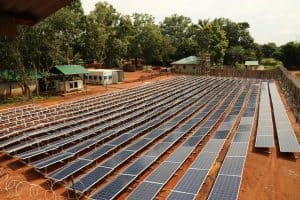
How Microgrids are Creating Energy Independence for Indigenous Communities
By Jane Marsh
Microgrids are emerging as a game-changer in pursuing a greener and more sustainable future, especially for indigenous communities. These small-scale, localized energy systems are revolutionizing how people access and use power, granting them newfound independence.
What Are Microgrids?
Microgrids or micro-utilities are self-contained energy systems operating independently or alongside the primary grid. Main grids are extensive power generation, transmission, and distribution infrastructure networks that deliver electricity to homes, businesses, and industries.
Microgrids are designed to provide reliable power, even in remote areas, making them an ideal solution for indigenous communities situated far from cities. One striking example comes from the Soboba Tribe in California, which is establishing a solar micro-utility to gain energy independence.
This initiative has paved the way for others to do the same, reducing their reliance on nonrenewable energy sources.
The Soboba Tribe’s Solar Microgrid
The journey of the Soboba Tribe toward energy independence is a testament to the potential of microgrids. The solar micro-utility, which will consist of almost 3,000 solar panels and energy storage systems, will supply a significant portion of the tribe’s electrical needs.
Consequently, this project will decrease its carbon footprint by 1,000 pounds a year once it’s up and running and reduce the adverse environmental effects of traditional energy sources.
The Roles of Emergency Power, Standby Power, and Microgrids
Having a reliable power source during outages is essential for businesses and indigenous communities. The National Fire Protection Association mandates emergency power systems in compliance with the National Electric Code, Article 700.3. These systems must support critical functions such as emergency communications, smoke detectors, elevator operation, and exhaust fans.
Emergency power, standby power, and microgrids are three distinct concepts related to providing backup or alternative sources of electricity. Still, they serve different purposes and have varying characteristics:
Emergency Power
Emergency power is specifically designed to provide electricity during critical situations such as power outages or emergencies. It ensures the uninterrupted operation of essential systems or services.
These are commonly found in settings where power continuity is vital, such as hospitals, data centers, and critical infrastructure. Emergency power systems are typically designed to provide energy for a relatively short duration, often until the primary source is restored or a longer-term backup takes over.
Standby Power
Standby power systems are intended to provide backup energy but are not limited to emergencies. They can be used in scenarios where interruptions are less critical but still impactful.
Standby power is commonly installed in commercial buildings, offices, and residential settings. It provides energy for essential loads like lighting, heating, and cooling during outages. It works longer than emergency systems but often relies on backup generators that can operate for an extended period.
Microgrids
Microgrids are used in various settings, including remote communities, industrial facilities, military bases, and institutions looking to enhance their energy reliability and sustainability. They are designed for continuous operation and can provide power for an extended period, especially when combined with renewable sources and energy storage.
The Advantages of Microgrids for Indigenous Communities
Indigenous communities often face unique energy challenges, including geographical isolation and limited resource access. Microgrids offer a practical solution to address these issues.
Generating electricity locally and efficiently lets micro-utilities minimize transmission losses and grid vulnerabilities, ensuring power is consistently available, even during extreme weather events.
They also empower these communities to take control of their energy future while preserving their cultural heritage and environmental values. Here are the advantages of microgrids for indigenous communities:
- Energy independence: Micro-utilities allow indigenous communities to generate their own electricity, often from renewable sources like solar panels or wind turbines. This reduces reliance on external power sources and grants them greater control over their energy supply.
- Resilience during outages: Microgrids can operate independently of the main grid, ensuring continuous power supply during outages, storms, or emergencies. This is crucial for maintaining essential services and safety, especially in remote areas.
- Sustainable energy: Micro-utilities often harness clean and sustainable energy sources, reducing greenhouse gas emissions and environmental impact.
- Cost savings: Generating their own electricity allows these communities to reduce energy costs in the long term.
- Local job creation: The development, installation, and maintenance of microgrids create local job opportunities, contributing to economic growth within the communities.
- Customization: Micro-utilities can be tailored to the specific energy needs of communities, ensuring power is directed where it’s needed the most, such as schools, health clinics, and community centers.
- Cultural preservation: Microgrids can integrate with traditional cultural practices and values, allowing indigenous communities to maintain their way of life while embracing modern energy solutions.
Overcoming Energy Challenges
Microgrids are introducing a new era of energy independence for indigenous communities, encouraging growth while adhering to traditional values. These initiatives reduce environmental impact and empower people to shape their sustainable energy future, lighting the way for a brighter future for all, one community at a time.
Article by Jane Marsh
Jane works as an environmental and energy writer. She is also the founder and editor-in-chief of